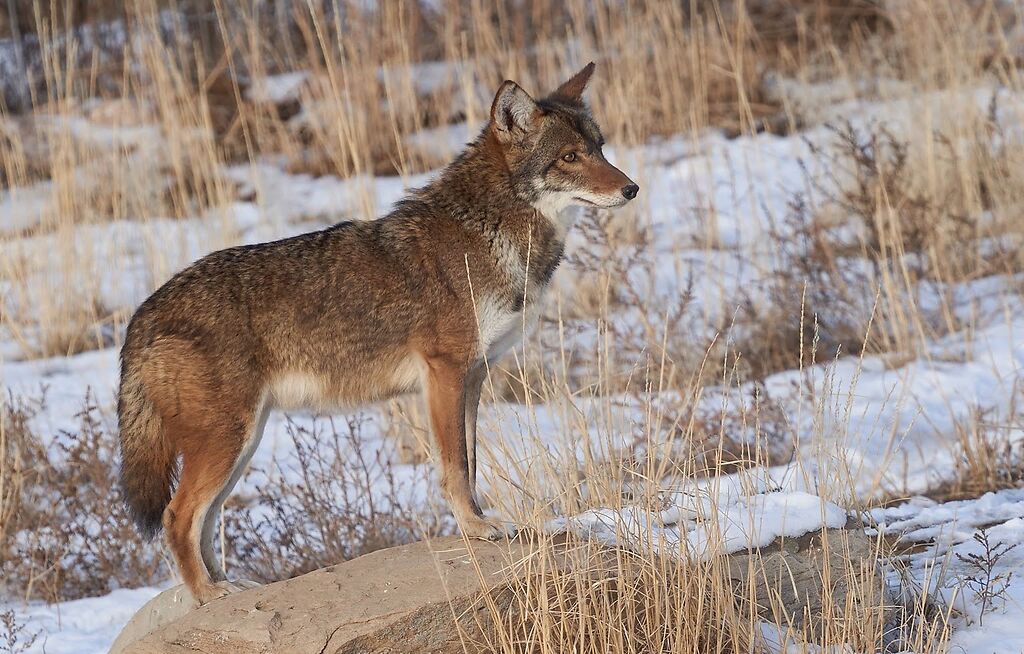Keeping Your Home And Pets Safe From Coyotes

Coyotes originate from the desert regions of the southwest, but some have migrated to other areas of the United States. Their natural habitat is open grasslands, high mesas, and plains. They also live in the mountains. Coyotes live by themselves, in pairs, and in groups, according to the abundance of food where they make their den. Most grasslands coyotes will stay within ten or twelve miles of their den at all times, unless extreme hunger drives them further away. In the mountains, a coyote will cover a larger area. In the warmer months, they will follow their prey high up into the mountains; however, in the winter months, snowfall drives them back down and closer to the base.
Coyotes Entering Populated Areas
Coyotes have, in the last few decades, moved into areas populated by humans due to necessity. Their grasslands are shrinking due to humans using the lands for dwellings and for farming. When the land is taken for human use, the animals that coyotes eat move elsewhere, and the coyotes must look for new food sources. Also, the wild vegetation that coyotes eat in addition to meat is lost as well when homes or farms take over the land. Coyotes would likely prefer to avoid humans, but they often do not have a choice but to enter areas populated by humans to find food.
Although they prefer fresh meat, they will scavenge if necessary. In some urban areas, coyotes will get into trash looking for food. Coyotes will also get into food left out for pets or for livestock. Domesticated animals, such as pet dogs and cats, can be victims of coyote attacks. Farmers, in particular, have the most trouble with coyotes because they will attack and kill livestock, including chickens, cattle, goats, and sheep.
Keeping Pets Safe From Coyotes
To keep your pets safe from coyotes in the area, make sure you do not let them roam freely at night. Although coyotes in their natural habitat will hunt during the day, in human populated areas they tend to be more nocturnal. This means that your pets will be safer in the daytime, but at night they could be attacked by a coyote. You should also avoid leaving food out at night for pets that could draw in the coyotes.
Keep Livestock Healthy
One of the best methods for keeping your animals safe from coyotes is to keep them healthy. Coyotes will prey on small and weak looking animals rather than taking on a large, robust appearing one. Maintaining the size and health of your livestock will discourage coyote attacks.
Protect the Babies
Even if your young animals are healthy, their small size put them at risk. During the day, they are much safer because the coyotes won’t be as likely to hunt and because their mothers will have a close eye on them. At night, coyotes will be looking for food, and a young, small animal that is separated from the rest of the group of livestock makes for easy prey. Make sure that young animals are put in a barn at night to discourage coyote attacks.
Fencing
One of the best ways to prevent coyote attacks on livestock is to fence your pastures in well. Once a coyote breaches the pasture and kills an animal, it will be much harder to deter it from attacking again. Prevention is the best method for deterrence. Make sure that there are no gaps in your fencing, and that fencing damaged by storms or animals is fixed quickly. Coyotes can jump, so you will need high fences to prevent them from accessing your pastures. Barbed wire at the top of your fences will help prevent a coyote from trying to go over it.
Coyotes are excellent diggers, as they often dig their dens. Barbed wire at the bottom of your fences will discourage a coyote from trying to dig under it and access your pastures. Electric fencing is another effective method for preventing coyote attacks on your livestock. You can install full electric fencing around your pastures, or you can modify existing fencing to include electrically charged wires at varying intervals that will deter coyotes.
Guard Animals
Guard animals can also be effective for protecting your animals from coyotes. There are several breeds of large dogs that make excellent guards for livestock. The guard dogs will have to be properly trained from a young age to be effective at guarding livestock. Mules and donkeys also make good guard animals because they don’t care for dogs or coyotes. Females are much easier to train for guarding purposes due to their maternal instincts. Another unexpected but highly effective guard animal for livestock is the llama. When a llama spots a predator in the pasture of animals it is protecting, it will make noise and run after and kick at the predator to chase it off.
